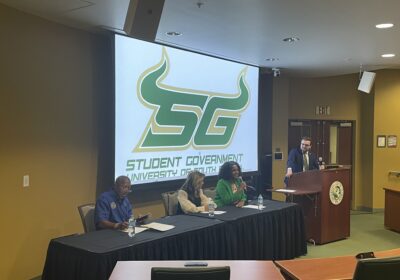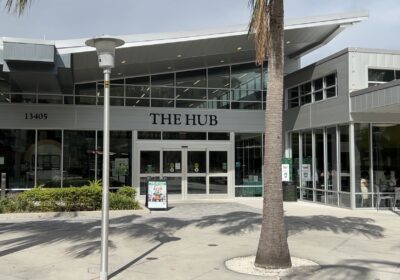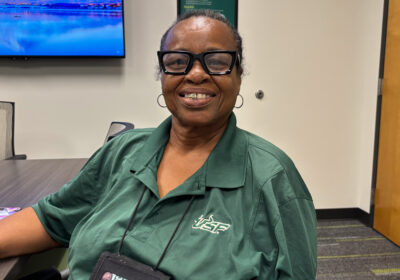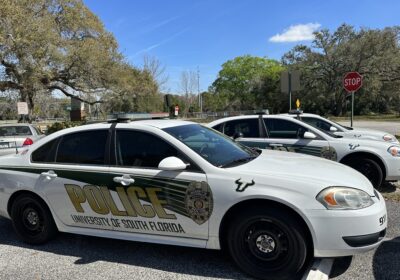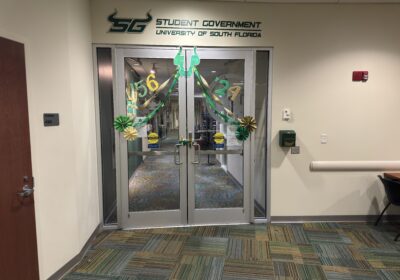Electric bus to be added to fleet of Bull Runners
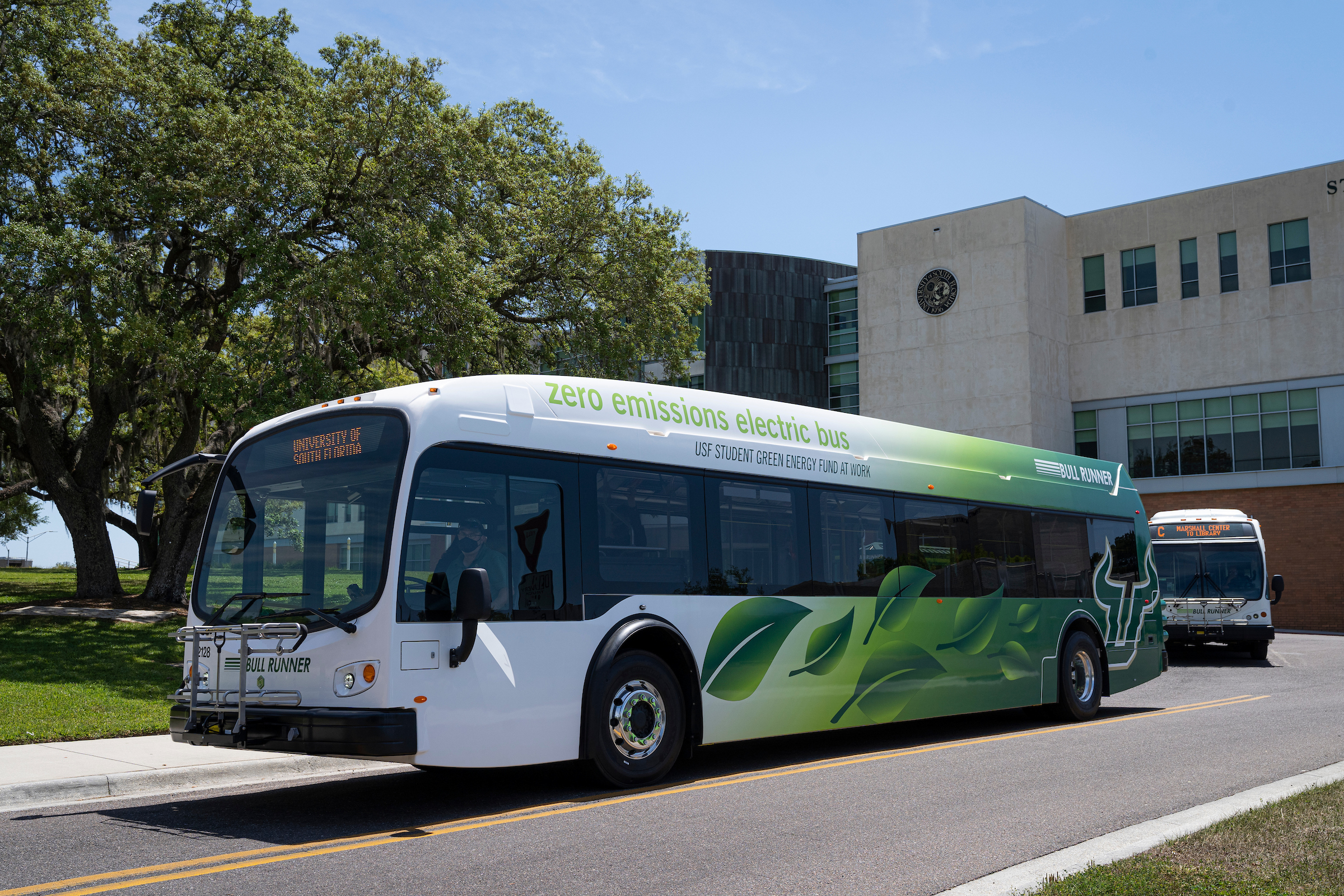
Another bus is being added to the fleet of Bull Runners that transport students, faculty and staff around the university area, but it won’t have to make any stops for gas.
The 40-foot, $911,285 Proterra Catalyst E2 is making its debut on campus Thursday as USF’s first zero-emissions electric bus. As a way to introduce the new addition, individuals will get to tour the bus as well as learn about sustainability efforts at USF in honor of Earth Day from 11 a.m. to 2 p.m. at the Marshall Student Center bus loop.
Unlike the current diesel buses, the electric bus will sustain itself for 350 miles off a single charge, use LED lighting for its interior and make much less of a roar as it transports passengers. Charging the bus from zero to 100% will take around six hours.
“It certainly cuts back on the greenhouse gas emissions significantly. If you think about us burning fuel, although we burn biofuel, it’s certainly night and day as it relates to the impact. In line with where we want to go from a sustainability standpoint, I think it’s a pretty significant impact and heading in the right direction,” said Raymond Mensah, director of Parking and Transportation Services (PATS).
The addition was made over the course of five years after a proposal was pitched by two USF students, Lauren Jones and Dylan Thomas, to the Student Green Energy Fund Council in 2016 for two 40-foot electric buses to be added to the Bull Runner fleet.
With warranties included, the bus will cost $911,285 and its charger $18,638 while the infrastructure and installation for the charging station will cost $170,052. The large diesel buses that make up most of the fleet cost around $500,000 each, according to Mensah, and the smaller ones $300,000.
PATS contributed around $349,000 to getting the electric bus and the rest of the costs were covered by the Student Green Energy Fund, according to Mensah.
Only one bus was purchased in order to test its capabilities and compatibility with the Tampa campus.
“I think the proper process was to get one bus, so make sure it works for our environment, and make sure we know how it is going to work for us operationally before we think about expanding and getting additional buses,” said Mensah.
Due to its size, the 40-foot bus will operate on the off-campus routes — C and D — that transport students to areas north of campus or to the University Mall area, respectively. The Bull Runner fleet currently has some 40-foot diesel buses, but most of the ones that make up the current fleet are of a smaller size.
“We would probably look for a smaller size bus for the next one because the larger buses are kind of restricted to specific routes, just because we don’t want to keep the large buses doing a lot of turns on campus,” said Mensah.
While it has a 70-person capacity for seated and standing riders, the bus will operate under the current 10-person limit in light of COVID-19 restrictions.
PATS will be surveying how the bus operates throughout the next year to determine if it will make any more electric additions to the fleet. Mechanical and electrical maintenance challenges will be at the top of the list of issues to keep an eye on as the buses are tested. PATS will also be evaluating the community’s response and whether or not the bus lives up to its 350-mile capabilities off a single charge.
“If we go a year and everything’s just fantastic, then we can say, ‘OK, this is great,’ but if we go six months and we start having all kinds of issues, then that’s a different conversation,” said Mensah.
Although there is some room for financial relief with no need to supply the bus with gas, the overall benefits of the bus environmentally make it a “great investment,” according to Mensah.
“You have to look at the impact of the environment as well right, so it’s not just the financial piece, but it has a significant impact for the environment, and a somewhat OK payback on the financial side is still a great,” said Mensah.

